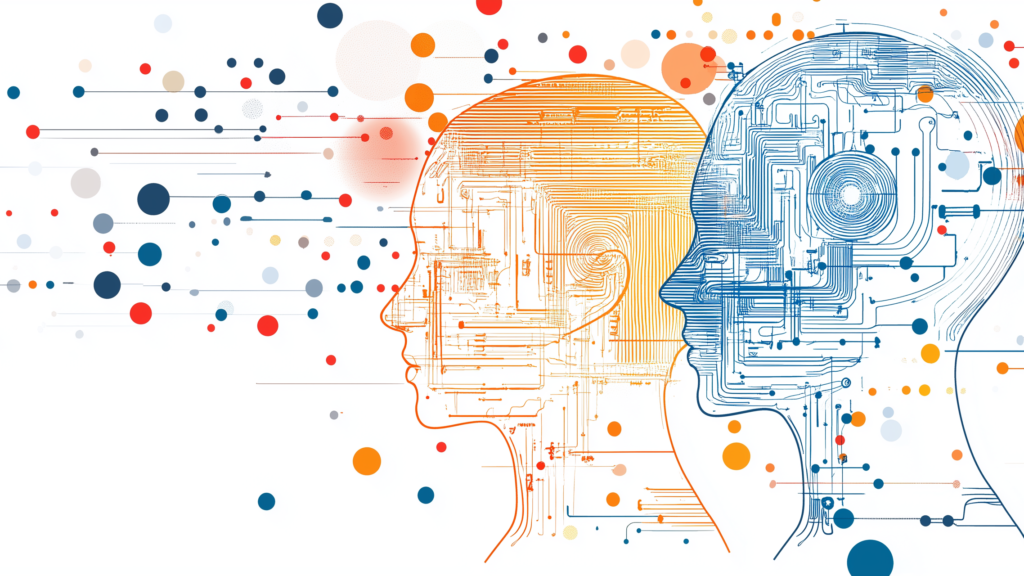
As artificial intelligence (AI) continues to reshape the healthcare landscape, its potential to transform behavioral health remains largely untapped. For leaders in the behavioral health field, this technological frontier presents both exciting opportunities and understandable concerns. This article aims to demystify AI in behavioral health, address common misconceptions, and provide a roadmap for thoughtful integration.
The term “Artificial Intelligence” conjures images of science fiction, but in reality, AI is already a part of our daily lives, from smartphone assistants to recommendation algorithms. In the context of behavioral health, AI might seem complex or intimidating, but at its core, it’s simply a tool to enhance human capabilities. Let’s demystify some key terms to build a clearer understanding:
Artificial Intelligence (AI) refers to computer systems capable of performing tasks that typically require human intelligence. This broad category encompasses various technologies and approaches, all aimed at simulating human-like decision-making and problem-solving. In behavioral health, AI might manifest as systems that can analyze patient records, recognize speech patterns indicative of mental health conditions, or even engage in basic therapeutic conversations.
Machine Learning is a subset of AI that enables systems to learn and improve from experience without explicit programming. Instead of following pre-programmed rules, machine learning algorithms analyze data to identify patterns and make predictions. For instance, a machine learning model might be trained on thousands of patient records to recognize early signs of depression or anxiety, becoming more accurate over time as it processes more data.
Data Analytics is the broader practice of examining data to draw conclusions and support decision-making. While not exclusively tied to AI, advanced analytics often incorporate AI and machine learning techniques to uncover deeper insights. In behavioral health, data analytics might involve analyzing treatment outcomes across large patient populations to identify the most effective interventions for specific conditions.
These technologies work in concert to analyze vast amounts of patient data, identify patterns that might be invisible to the human eye, and provide insights that support clinical decision-making and improve patient outcomes. By breaking down these concepts, we can see that AI is not a mysterious black box, but rather a set of powerful tools that, when used responsibly, can significantly enhance the quality and efficiency of behavioral health care.terns, and provide insights that support clinical decision-making and improve patient outcomes.
Common Misconceptions About AI in Behavioral Health
- AI Will Replace Clinicians
One of the most prevalent fears is that AI will render human professionals obsolete. However, AI is designed to augment, not replace, human expertise. The empathy, intuition, and ethical judgment that behavioral health professionals bring to their work are irreplaceable. AI serves as a powerful tool to support clinicians, not supplant them. - AI Is Too Complex and Inaccessible
While the underlying technology can be complex, modern AI solutions are increasingly user-friendly. Many vendors offer intuitive interfaces and comprehensive training programs to ensure that staff at all levels can effectively utilize these tools. The key is choosing solutions that align with your organization’s needs and capabilities. - AI Compromises Data Privacy and Security
Data security is a valid concern, especially given the sensitive nature of behavioral health information. However, reputable AI systems are built with HIPAA compliance and data protection as top priorities. Many AI solutions offer enhanced security features that can actually improve your organization’s overall data protection measures.
The Transformative Potential of AI
When implemented thoughtfully, AI can offer significant advantages to behavioral health organizations. In terms of patient care, AI has the capability to analyze patterns in patient data, suggesting personalized treatment plans and identifying early warning signs of mental health issues. This enables more proactive and tailored care strategies, potentially improving outcomes for patients.
On the operational front, AI can dramatically enhance efficiency by automating tasks such as appointment scheduling and streamlining billing processes. This automation frees up valuable time for staff to focus on patient care, potentially leading to reduced burnout and improved job satisfaction among healthcare providers.
AI serves as a powerful tool for clinical decision support, providing evidence-based recommendations and alert systems for potential patient risks. By acting as a valuable second opinion for clinicians, AI can enhance diagnostic accuracy and treatment efficacy, ultimately contributing to higher quality care.
Ethical and Practical Considerations
As we embrace AI in behavioral health, it’s crucial to address both ethical and regulatory considerations. First and foremost, bias mitigation must be a priority. AI algorithms should be developed and tested to provide equitable care across diverse populations, involving careful data selection, algorithm design, and ongoing monitoring to prevent perpetuating or exacerbating existing healthcare disparities.
Transparency and explainability are equally important; opting for “explainable AI” systems allows clinicians to understand how decisions are being made, building trust and enabling informed decision-making based on AI recommendations.
Strong data security requires robust measures that not only comply with HIPAA and other relevant regulations but go above and beyond in protecting sensitive patient information. Regular security audits and updates are essential to maintaining data integrity.
From a regulatory standpoint, organizations must navigate a complex landscape. This includes ensuring compliance with state and federal laws governing the use of AI in healthcare, such as the FDA’s evolving guidelines on AI/ML-based Software as a Medical Device (SaMD).
Organizations must consider the ethical implications of AI use in mental health contexts, adhering to professional codes of ethics and potentially engaging ethics boards for oversight. As AI technologies continue to advance, staying abreast of changing regulations and proactively addressing ethical concerns will be critical for successful and responsible implementation in behavioral health settings.
Building Trust in AI Technologies
To successfully integrate AI into your organization, focus on:
Stakeholder Engagement
Involve clinicians, IT staff, and patients in the implementation process to address concerns and gather valuable insights. This collaborative approach ensures that AI solutions meet the needs of all users and align with organizational goals.
Training and Education
Invest in comprehensive training programs that build competency and confidence in using AI tools across your organization. Ongoing education helps staff stay current with evolving AI technologies and best practices.
Steps to Integrate AI into Your Organization
- Assess Organizational Readiness: Evaluate your current infrastructure and identify specific areas where AI could add value. Consider factors such as data quality, IT capabilities, and staff readiness.
- Set Clear Objectives: Define what you hope to achieve with AI, whether it’s improving patient outcomes, reducing administrative burden, or enhancing data analysis capabilities. Align these objectives with your organization’s broader strategic goals.
- Choose the Right Solutions: Select vendors and technologies that align with your goals and organizational culture. Look for solutions that offer customization, scalability, and robust support.
- Implement Strategically: Consider a phased approach, starting with pilot programs to test efficacy and gather feedback before full-scale implementation. This allows for adjustments and optimization along the way.
- Monitor and Evaluate: Establish key performance indicators (KPIs) to track the impact of AI integration, and create feedback loops for continuous improvement. Regularly reassess and refine your AI strategy based on these insights.
As leaders in behavioral health, you have the opportunity to harness AI’s potential to enhance patient care, improve operational efficiency, and stay at the forefront of innovation in mental health treatment. By approaching AI integration with informed caution and strategic planning, you can overcome skepticism and position your organization for success in an increasingly technology-driven healthcare landscape.
The journey towards AI integration in behavioral health is not just about adopting new technologies; it’s about re-imagining how we can provide better care for those we serve. With thoughtful implementation and a commitment to ethical use, AI can be a powerful ally in our mission to improve mental health outcomes.
Ready to take the next step toward integrating AI into your behavioral health practice? At Xpio Health, we’re here to guide you through selecting and implementing the right technologies for your unique needs. Our expertise in EHR optimization, data visualization, and security will ensure your transition is seamless and secure. Contact Xpio Health today to explore how AI can enhance your care delivery and operational efficiency.
#BehavioralHealth #HealthcareAI #EHROptimization #MentalHealthTech #DataDrivenCare #HealthcareInnovation #XpioHealth #AIFuture #PatientCare




